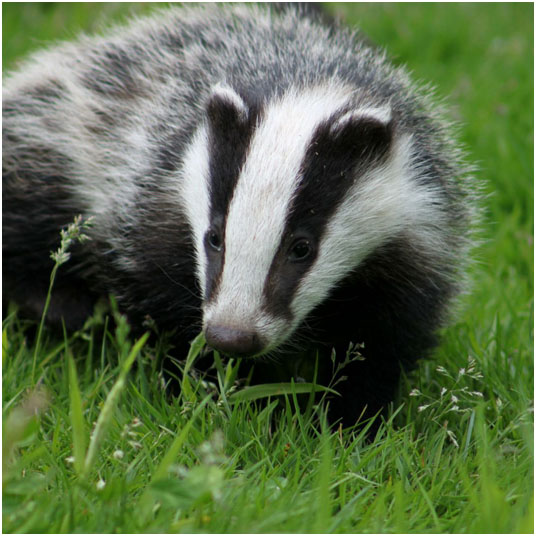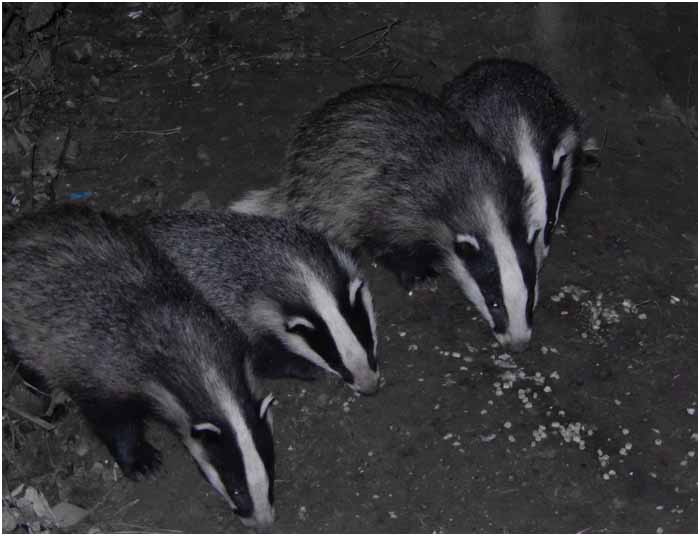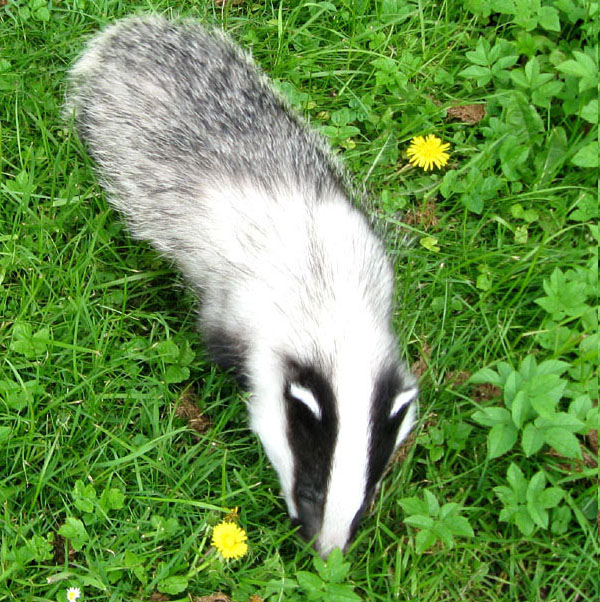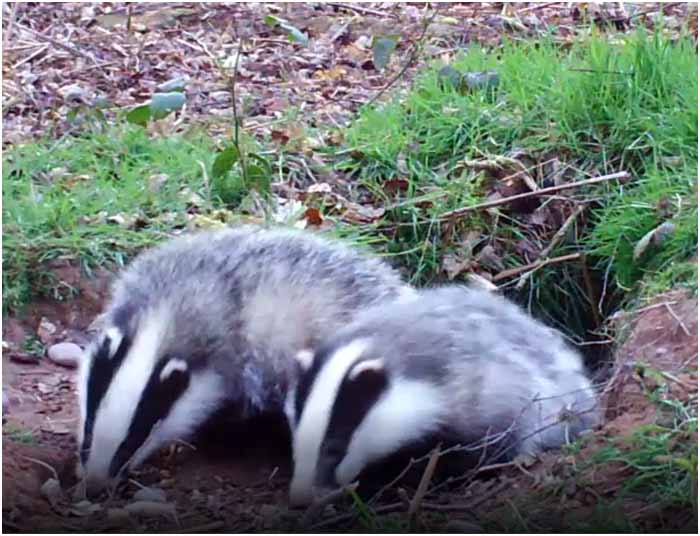|
NOTTINGHAMSHIRE BADGER GROUP
|
| About Badgers |

The European Badger, or Meles meles to give it its Latin name, is a member of the Mustelid family of mammals characterised by having scent glands at the base of their tails, and as such is a close relation of the otter and the weasel.
A few hundred years ago bears, wolves, large wild cats and wild boar roamed the length and breadth of the British Isles. The clearing of forests, the building of towns, villages and roads, hunting for sport and for food have eliminated almost all our large mammals from the wild but the badger survives. Fossil evidence of the badger dates back some 250,000 years or more. The badger is both shy of human contact and nocturnal which means that few people have seen the badger in the wild. Perhaps because it is a creature of the night and has a reputation for ferocity if cornered, the badger has long been harassed and hunted by man, now the only enemy of this quiet animal.
Badgers are intelligent and social animals who live in close family groups called clans which are territorial. The results of recent studies in badger behaviour using advanced animal tracking methods suggest that badgers may be more tolerant of individuals from other clans than was once thought, particularly during breeding.
Badgers are nocturnal, spending the day resting in an underground burrow system called a sett and forage for food at night. Size and weight varies between males (boars) and females (sows), and throughout the year, with the former being slightly larger and thicker set with a broader head. Average weight is around 12kg (28lb) for an adult which has a nose to tail length of between 80 to 97 cm (32 to 39 inches). 
|
| Diet and Breeding |
 Photo: A temporary lightening of the hair on the back indicates that a cub has reached the 'teenage' stage.
The Badger's Diet
Badgers are omnivores, they eat a wide variety of foods and are foragers rather than hunters. The majority of their diet consists of earthworms which they suck up off the surface of grassland in large numbers. Insects and their lavae are another favourite food and are sought out in the leaf litter of the woodland floor, on pasture or arable land. Wasps nests are also dug up for grubs and bee hives may be raided for honey although badgers rarely cause problems to bee keepers. Slugs and snails, for which badgers may climb a little way up a sloping tree are also consumed. The eggs of ground nesting birds may occasionally be taken, together with small mammals such as voles, rats, young rabbits, hedgehogs although much of this food is found as carrion. Roots and vegetables, tubers and bulbs are dug up and eaten. Cereals, nuts, fruit and fungi are consumed when in season.
Breeding
Badgers will mate throughout the year but usually between February and September, after the previous years cubs have been born and energy levels are high. Despite this long breeding period, cubs are usually born in January and February after a gestation period of between 8 to 10 weeks. This is a result of delayed implantation in which the fertilised eggs are maintained in a state of suspended development unattached to the uterus. It is possible for individual cubs within a litter to have different fathers. Implantation of the fertilised eggs and their subsequent development into foetuses takes place towards the end of December. Only a single litter of cubs is produced per year normally comprising 2-4 cubs, although a maximum of 5 is possible. Cubs are weaned after approximately 3 months and first emerge from the sett in late Spring (May/early June). A female is ready to mate again immediately after the birth of her cubs. Cubs become independent by Autumn when cubs usually disperse to new areas as a result of aggressive behaviour by older dominant boars.  Photo: Cubs exploring ouside sett entrance. Sows can also be aggressive in their methods to evict their young from the sett. Female cubs are sometimes allowed to stay in the family sett until the next season. If conditions are favourable, with a plentiful supply of food, a female cub can successfully mate in her first Autumn. |